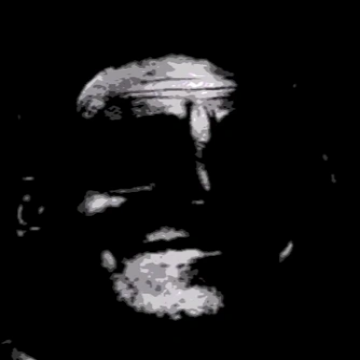On the Subject of Uncanny Maze
You see your super gaming factory demolished by a Doomsday Button.
On this module is an image of Mr. Incredible becoming uncanny alongside four arrows and three red buttons. If the module is white instead of dark red, the buttons are red instead of white, there is no APPEND button, and Mr. Incredible is instead becoming canny, you are looking at Canny Maze. These images (tiles) are numbered 0-9 in order of the table below, and are randomly distributed across a square grid (maze) with dimensions ranging from 4 to 6.
| YOUR MAZE IS: | |
|---|---|

|

|
| GOAL MAZE | |

|

|
| CENTER MAZE | |

|

|
| TOTAL MAZE | |

|

|
| CORNERS MAZE | |

|

|
| BORDER MAZE | |
NOTE: because the images are disturbing, there is a setting in the module to blur all of the images past a given number (0 in order to blur all). Any number outside the ranges of 0-9 will leave all images unblurred. There is also a slider below that controls the blurring of the images in this manual.
Pressing the center of the module reveals the entire maze, and pressing again returns to the view of the current position. In the view of the entire maze, the current position is surrounded by a blue border and the goal by a red border. Additionally, there will be text in the top left corner giving letter-number coordinates of the current position and the goal. Note that backtracking is not automatically allowed.
The button on the bottom right completely resets all progress, but does not regenerate the maze. The button on the bottom left turns all of the images into numbers when viewing the entire maze to make communication easier. As with the maze view, the blue number represents the current position and the red number represents the goal.
The type of maze that is currently active changes depending on the current tile. Rather than simply navigating to the goal, the defuser must submit a sequence of tiles by pressing the APPEND button on each appropriate tile, then press APPEND on the goal. The sequence of tiles is determined by the size of the maze. If the submitted sequence is incorrect when submitting on the goal, the maze will reset, but will not regenerate.